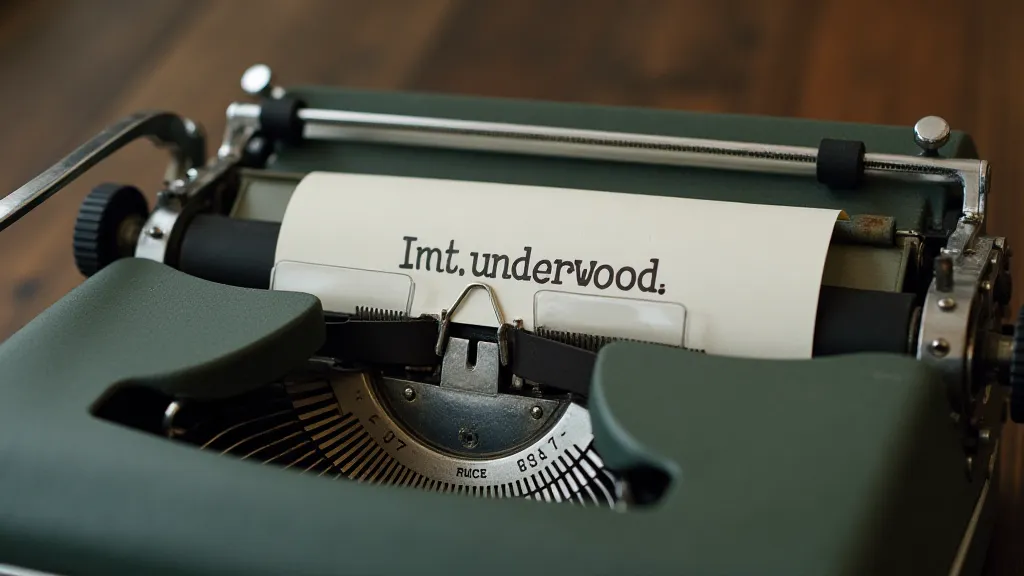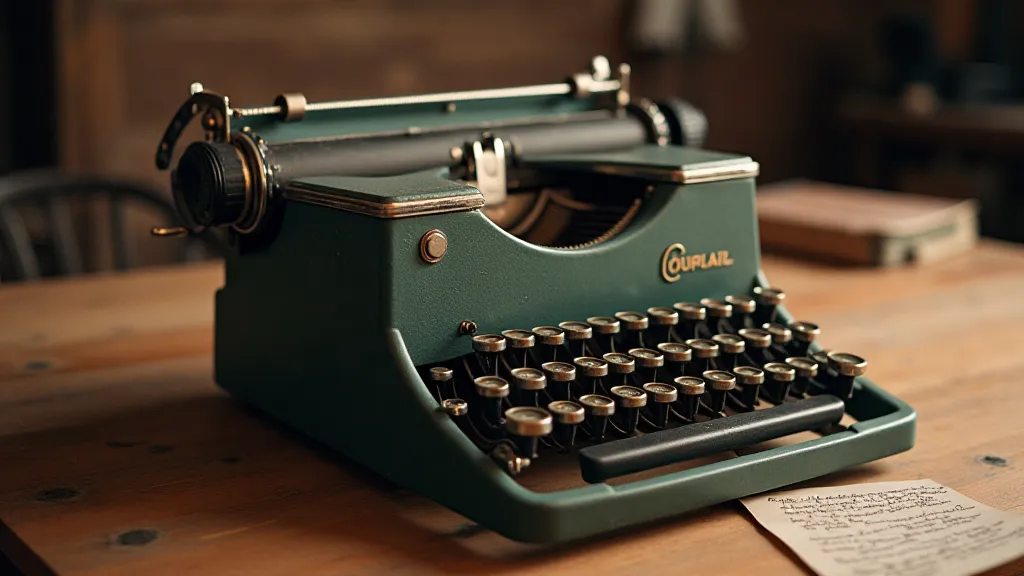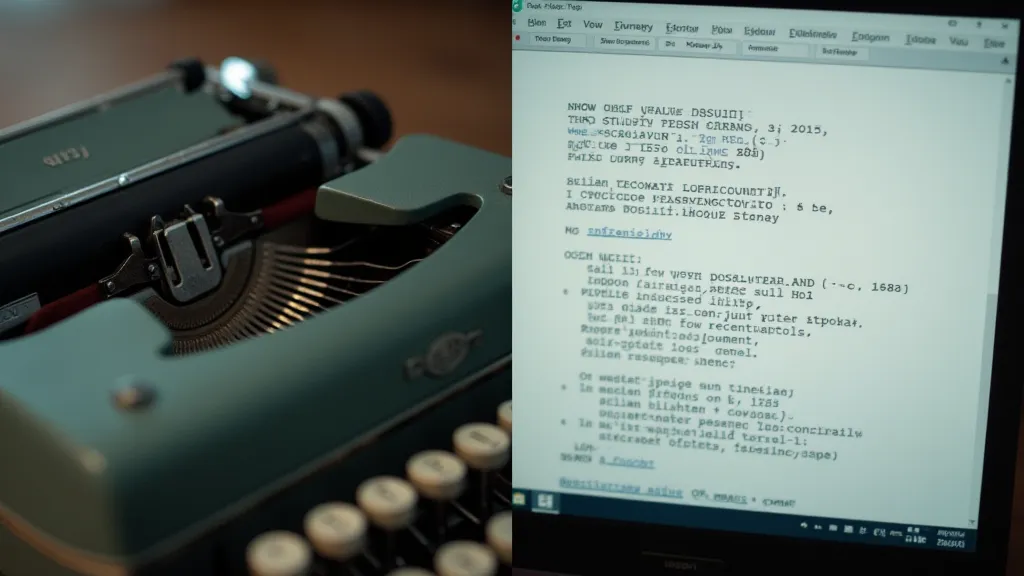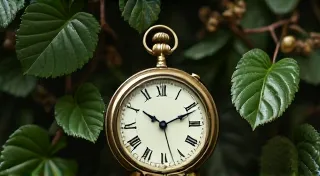The Quill's Digital Heir: Reimagining Legacy Through Typewriter Fonts
There's a profound beauty in the permanence of the past. Not the cold, sterile preservation of museums, but the warm, tactile intimacy of objects once actively used, objects imbued with the whispers of countless stories. Consider the antique typewriter. More than a machine, it’s a portal – a physical link to a time when every word carried a deliberate weight, a consequence of the mechanical process behind its creation. And now, that legacy is finding new life, not in the clatter of keys, but in the elegant imperfections of digital typewriter fonts.
I remember my grandfather's Underwood. It wasn't a gleaming showcase piece, but a workhorse, perpetually dusted with a fine layer of ink and bearing the scars of decades of use. The smell – a peculiar blend of oil, metal, and the ghosts of a thousand typed letters – is a sensory memory I carry with me. He used it for everything: crafting intricate legal documents, composing heartfelt letters, and even patiently teaching my clumsy fingers the basics of letter writing. It wasn’t just a tool; it was a confidante, a silent witness to family history. It's a feeling many share - the sense of connection to previous generations through these mechanical marvels.
From Mechanical Mark to Digital Echo: The Evolution of Typeface
The story of typewriter fonts isn't just about mechanics. It’s interwoven with the evolution of typography itself. Before the typewriter, printing relied on intricate typesetting processes involving movable type – a remarkable achievement in its own right. The earliest typewriters, recognizing the need for readability, largely mimicked these existing typefaces. But as technology advanced, so did the aesthetic possibilities. Manufacturers began experimenting, creating unique designs that reflected the machine's inherent character: the sharp angles, the consistent spacing, the almost clinical precision. The result was a distinct typographic voice – the "typewriter font" as we know it.
Early models often employed a "pica" font, a standard size intended for readability in newspapers and books. But as typewriters became more common in homes and offices, a demand arose for variations – bold, italic, and eventually, more decorative faces. Each manufacturer – Remington, Underwood, Royal, IBM – developed its own nuances, subtle differences in letterforms that, to the untrained eye, might seem insignificant. Yet, for the typography enthusiast, these details are crucial – they’re the fingerprints of a particular era, a specific machine, a unique human touch.

Recreating the Imperfections: The Art of Typewriter Font Reproduction
The challenge of recreating these fonts digitally isn't simply about digitizing the letterforms. It's about capturing the *essence* of what made them unique. Original typewriter fonts were imperfect – tiny inconsistencies in stroke width, slight misalignments of characters, the subtle degradation of the ribbon impacting the darkness of the print. A perfectly clean, digital font would be a betrayal of the original. The goal is to create a digital reproduction that *feels* like it came from a vintage typewriter, complete with its charming flaws.
This requires a painstaking process. Often, it begins with meticulous photography of original typewriters – capturing impressions of characters on special paper. These images are then scanned at high resolution, and each letterform is painstakingly traced and refined in design software. The process isn’t about replicating every pixel with robotic accuracy. It’s about understanding the underlying design principles, the subtle nuances that defined the typeface, and recreating those with digital tools.
The best reproductions incorporate "noise" – subtle variations in contrast and density that mimic the effects of ribbon degradation and imperfect inking. These subtle imperfections aren’t defects; they’re character. They’re what separates a generic sans-serif from a truly evocative typewriter font.
Beyond Nostalgia: Why Typewriter Fonts Matter Today
The resurgence of typewriter fonts isn't simply a nostalgic trend. While there's certainly a romantic appeal in evoking a bygone era, these fonts offer something more profound. They represent a deliberate rejection of the sterile, homogenized aesthetic of modern digital typography. They embody a return to a time when every word felt considered, deliberate, and imbued with a sense of weight.
Think about the difference between a marketing email composed in a generic Arial font and a handwritten-style letter set in a faithful reproduction of a Royal Quiet De Luxe typeface. The latter carries an immediate sense of authenticity, of personal connection. It suggests a deliberate effort to communicate in a more thoughtful, engaging way. They offer a visual cue to quality, attention to detail, and a desire to connect on a human level.

Collecting and Restoration: Preserving the Legacy
For those deeply fascinated by the world of antique typewriters, collecting and restoration offer a tangible way to engage with history. Collectors often specialize in particular brands or models, meticulously researching their production history and seeking out rare variations. Restorers, meanwhile, breathe new life into neglected machines, carefully cleaning, repairing, and lubricating their intricate mechanisms.
Restoring a typewriter isn't just about mechanical repair. It's about preserving a piece of cultural heritage. It's about ensuring that future generations have the opportunity to experience the tactile joy of typing on a machine that once shaped the written word. Even a non-working typewriter, with its patina of age and its echoes of past use, holds a certain beauty – a testament to the enduring power of human ingenuity.
The availability of accurate typewriter font reproductions is intrinsically linked to this preservation. As more original machines are documented and analyzed, the accuracy and authenticity of these digital replicas improve. It's a symbiotic relationship – the preservation of the physical object informs the digital representation, and vice versa.
The Digital Quill: Continuing the Story
The typewriter font library is more than just a collection of digital files. It's a testament to the enduring power of human creativity, a bridge between the mechanical precision of the past and the digital possibilities of the future. It’s a way to keep the story alive – the story of handwritten letters, of carefully crafted documents, of a time when every word carried a deliberate weight. It’s a digital quill, ready to continue the story, one carefully typed letter at a time.





